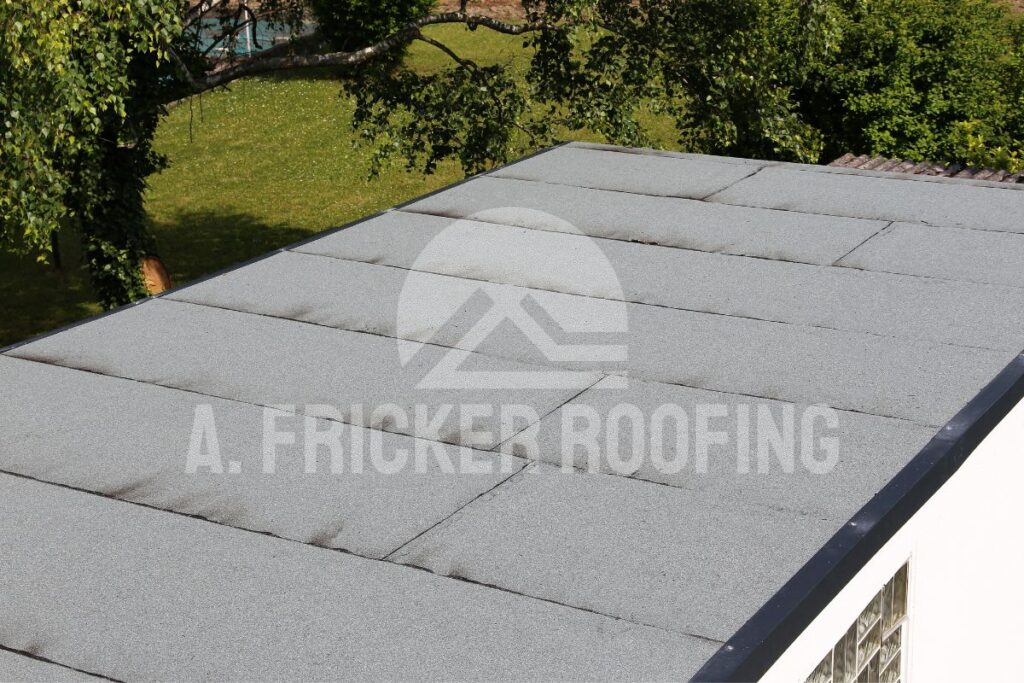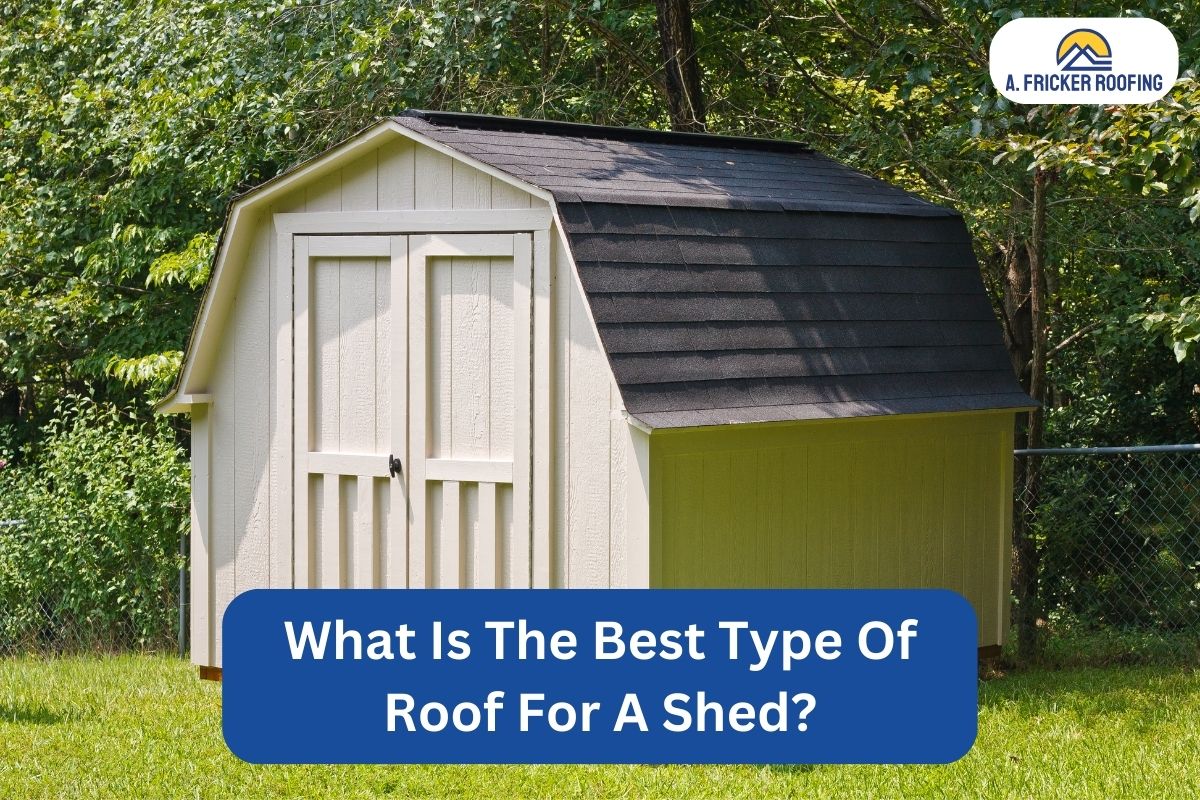What type of roof should you install on a shed? This is a big question property owners deal with when adding an outbuilding on their property. Sheds have different requirements for roofing, all depending on what purpose they serve, your location, and their architecture. Will it house the lawn mower, be a place to store wood, or a work space?
So, what is the best type of roof for a shed? In this blog post, we’ll explore various shed roof designs and their unique features. Also, we will explain which is the best type of roof for your shed.
What Is A Shed Roof?
Sheds are often described as small structures like workshops, garages, or storage buildings. Like any other building type, residential or commercial, sheds have roofs that boost their aesthetics and functionality. However, many different types of roofs can be used, making it difficult for property owners to choose the best type of roof for a shed.
From skillion, flat, and gable roofs, to salt box and butterfly roofs, you can find any of these types installed on sheds across the United States. The versatility of shed roofs allows customization for various architectural styles and purposes.
But what is the best type of roof for a shed? There are many types of shed roofs to consider for your shed or outbuilding.
Different Types of Shed Roofs To Consider
1. Skillion Roof
Also known as a shed roof or lean-to roof, the skillion roof slopes in one direction. This modern and minimalist design is popular in contemporary architecture and can be customized to suit various shed sizes and styles. Skillion roofs shed water efficiently and allow for creative interior layouts, making them a practical choice for sheds with various uses.
Advantages
- Efficient water runoff and drainage
- Versatile design options for contemporary architecture
- Ideal for sheds of various sizes and styles
- Allows for personalized interior layouts and space utilization
2. Flat Roofs

Flat roofs are among the simplest designs for sheds, featuring a completely horizontal surface. While flat shed roofs may not provide as much drainage as sloped roofs, they offer easy construction and ample space for installing solar panels, rooftop gardens, or additional storage space. However, proper waterproofing and drainage on flat roofs are crucial to prevent pooling and structural damage.
Advantages
- Easy construction and installation process
- Ample space for rooftop features
- Modern and minimalist aesthetic appeal
- It can be cost-effective for small shed structures
3. Gable Shed Roofs

A gable roof is one of the most common roofing designs in North America. Since they consist of two sloping sides that meet at a central ridge, forming a triangular shape at each end, they are also known as pitched or peaked roofs. This type of shed roof design provides excellent drainage and ample space, making it suitable for sheds that require extra storage or loft space. Gable roofs are versatile and can complement various architectural styles, whether traditional or contemporary.
Advantages
- Excellent drainage
- Versatile design options for various architectural styles
- Provides increased headroom and storage capacity
- Classic and timeless aesthetic appeal
4. Saltbox Shed Roofs

The saltbox roof is like a gable roof but features asymmetrical slopes. Unlike gable roofs which have even roof faces, saltbox shed roofs have one slope extended further than the other. This colonial-era roof design provides extra space for a second-floor loft or storage area. Saltbox roofs offer a distinctive appeal and are known for enhancing the look of any shed or outbuilding.
Advantages
- Provides extra space for a loft or storage
- Reduced chance of leaks due to the steep slope
- Offers a distinctive silhouette and visual interest
5. Butterfly Roofs
The butterfly roof, characterized by its unique upward-sloping V shape, creates a striking architectural appeal while bringing in natural light and fresh air. Since this roof design facilitates rainwater harvesting and solar panel installation, it is ideal for property owners who prioritize eco-friendly building designs. While butterfly roofs require careful engineering to support the inward slopes, they offer unparalleled aesthetic appeal and sustainable features.
Advantages
- Maximizes natural light and ventilation
- Facilitates rainwater harvesting and solar panel installation
- Unique and visually striking architectural design
- Suitable for those who want sustainable building features
6. Gambrel Shed Roof

Gambrel roofs offer a distinct design and two slopes on each side, with the lower slope steeper than the upper slope. Commonly installed on barns, this unique roof design offers increased headroom and storage capacity, making it suitable for sheds. Moreover, gambrel roofs can be customized to meet the specific needs of the property owners. They evoke a rustic charm and can be added with dormers or gable ends for added architectural interest.
Advantages
- Increased room for storage
- Rustic charm and aesthetic appeal
- Suitable for barns, garages, or loft sheds
- It can be customized with dormers or gable ends
Best Roofing Materials For Shed Roofs
Along with the roof design, the roofing material you choose for your shed is equally important as it provides protection against weather conditions.
1. Asphalt Shingles
Asphalt shingles are a common choice for their affordability, ease of installation, and versatility. Also, their waterproofing composition makes them a durable and sturdy option for shed roofs. They come in various colors and styles, providing options to match different shed designs. Asphalt shingles offer decent protection against the elements. So, if you are installing asphalt shingles, expect they will protect your roof shed for up to 15 to 30 years with proper maintenance.
2. Metal Roof
Metal roofs, such as corrugated steel or aluminum panels, are highly durable and resistant to harsh weather conditions. Many shed owners install metal roofs or corrugated metal panels for their durability and rust resistance. Moreover, metal roofs provide excellent protection against rain, snow, and wind, making it ideal for sheds located in areas prone to extreme weather. Metal roofing panels are lightweight, easy to install, and can last 40 to 70 years with minimal maintenance.
3. Cedar Shakes or Shingles
Wood shingles or shakes are a great choice for any roof. Adding beauty and enhancing the insulation of sheds, cedar shakes or shingles are favored for their natural look and rustic charm. Apart from the insulation properties, they offer good weather-resistance, making them suitable for sheds in wooded or rural areas. Cedar shingles require regular maintenance to prevent rot and extend their lifespan, but can last 20 to 40 years when properly cared for.
4. Composite Shingles
Made from a blend of asphalt, fiberglass, and other synthetic materials, composite shingles offer several benefits for shed owners. Whether you prefer the look of traditional asphalt shingles, wood shakes, or slate tiles, composite shingles can replicate the appearance of natural roofing materials while offering superior performance and longevity. This roofing option lasts for 40 to 50 years with regular inspections and timely repairs.
5. EPDM Membrane
If you own a shed with a flat roof, then EPDM can be the right choice. EPDM is a durable and flexible roofing material suitable for flat or low slope shed roofs. This roofing material provides excellent waterproofing and UV protection. EPDM is easy to install and can last 20 to 30 years with proper maintenance.
How To Choose The Best Type of Roof For A Shed
Choosing the right design and roofing materials for your shed requires the analysis of several factors. The following are some crucial factors to consider.
1. The Shed’s Purpose and Location
If you want to choose the best type of roof for a shed, determine how you plan to use the shed and where it will be located on your property. For example, a storage shed may have different requirements than a workshop or a garden shed.
Also, consider the local climate and weather conditions, such as rainfall, snow, wind, and temperature fluctuations. This will help you to choose a roof design and material that can effectively withstand the elements.
2. Assess Aesthetic Preferences
Sheds aren’t usually known for standing out on a property, but you can match them to your chosen aesthetic by choosing a suitable roofing material and style. Consider factors such as roof pitch, shape, color, and texture to ensure that the roof design complements the overall look of your property and matches your personal preferences.
3. Evaluate Your Budget
Determine your budget for the shed project, including materials, labor, and any additional features or upgrades. Research the cost of different roof materials and designs to find options that fit within your budget while still meeting your quality and performance requirements.
Final Thoughts
Now that you know some different types of shed roofs and their benefits, you can make an informed decision. By choosing the right shed roof design and investing in quality materials and installation, you can enjoy a durable, weather-resistant, and visually appealing shed for years to come.
Contact A. Fricker Roofing and Waterproofing In Tulsa, OK, For A New Roof Installation
If you are considering installing a new roof on your shed, contact A. Fricker Roofing and Waterproofing in Tulsa, OK. The roofers at the company are proficient at handling any roofing project. Whether you want to install a new roof or replace the existing one, our team of expert roofers has got you covered. Contact us today at (918) 402-7167 and consult a professional for your roofing needs.

